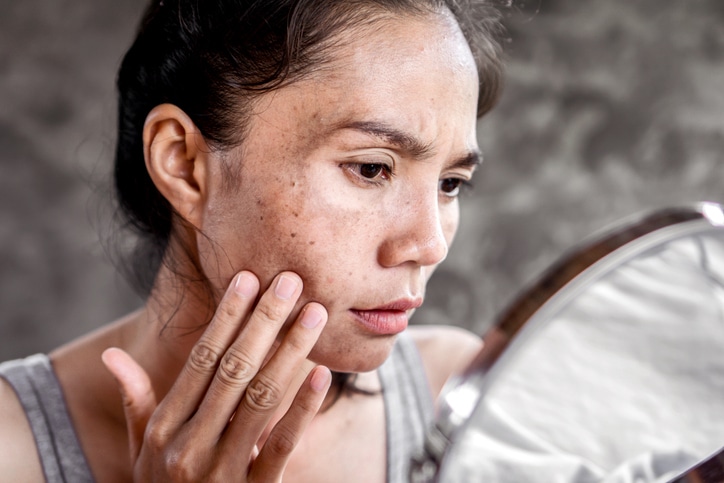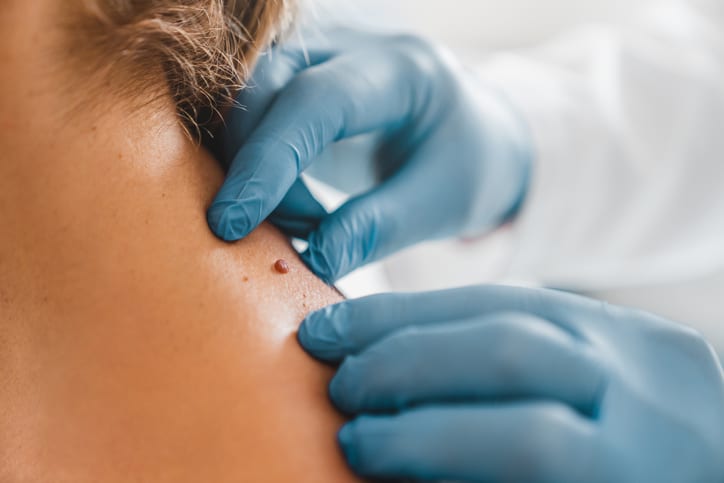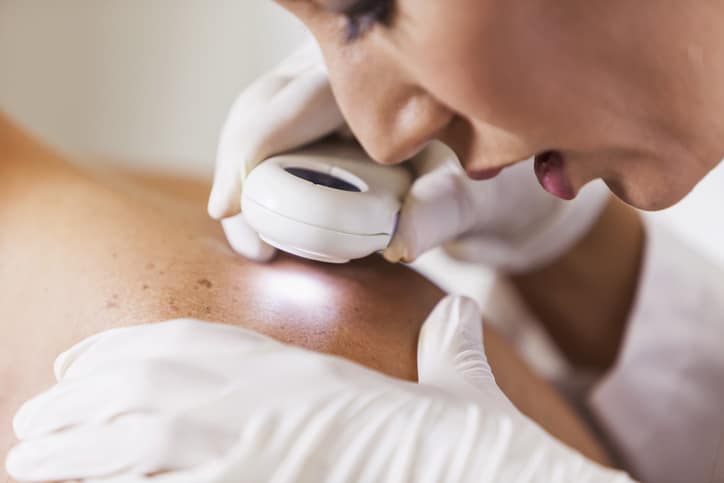Effects of Sun Damage on Your Skin & How to Treat Them
September 20, 2022 by VitalSkin Dermatology

The sun is a powerful force. It can be used to warm our planet and make our days brighter, but it can also be damaging if we’re not careful. The sun’s rays contain ultraviolet (UV) radiation, which can cause a number of skin conditions. From wrinkles, sun spots, irregular pigmentation, to leathery skin and even malignant melanoma, the sun can cause some serious damage on your skin if you’re not careful. So, what are the effects of sun damage on your skin and how can we treat them? Let’s find out!
Non-Cancerous Skin Conditions Caused by the Sun
Most skin conditions caused by sun exposure aren’t cancerous and can be treated with cosmetic treatments such as dermabrasion and chemical peels.
Wrinkles
One of the most common effects of sun damage on your skin is wrinkles. Wrinkles are caused by a breakdown of the collagen and elastin in your skin, which leads to sagging and lines. The sun’s UV rays can cause this breakdown, as well as other factors like smoking and poor diet. To treat wrinkles, you can use a number of different methods like retinoids, peptides, and antioxidants. These ingredients will help to stimulate collagen production, smooth out lines, and brighten your skin. Wrinkles can also be treated by procedures such as dermapeels, photofacials, dermal fillers and botox among others.
Photoaging
Photoaging is the premature aging of your skin that’s caused by exposure to UV radiation. This can include wrinkles, rough texture, irregular pigmentation, and dryness. To treat photoaging, you can use a number of different topical treatments like retinoids, peptides, antioxidants, and sunscreen. These ingredients will help to stimulate collagen production, smooth out lines, brighten your skin, and protect it from further damage. Photoaging can also be treated by dermatological procedures such as microdermabrasion, chemical peels, and laser resurfacing.
Moles

Moles can also appear as a result of prolonged sun exposure. Although most moles are benign, they also be a sign of skin cancer, so it’s important to have them checked by a doctor. To treat moles, you can use a number of different methods like surgery, laser therapy, and topical treatments. These treatments will help to remove the mole, and prevent it from coming back. To determine if a mole is cancerous you can get a skin biopsy or a mole and skin cancer screening to determine the best treatment for you.
Sun Spots
Another common effect of sun damage on your skin is sun spots. Sun spots are dark patches on the skin that are caused by an overproduction of melanin. They can be small or large, and they can appear on any area of the body that’s been exposed to the sun. To treat sun spots, you can use a number of different methods like laser therapy, micro-needling, brightening peels and chemical peels. These treatments will help to lighten the dark spots and even out your skin tone.
Pre-Cancerous Skin Conditions
There are also a number of pre-cancerous skin conditions that can be caused by sun exposure. These conditions need to be monitored by a doctor, and treated if necessary.
Actinic Keratosis
Actinic keratosis is a pre-cancerous skin growth that typically appears as a scaly, raised, red or brown spot on the sun-exposed skin. It’s important to treat actinic keratosis because it can lead to squamous cell carcinoma. To treat actinic keratosis, you can use a number of different methods like topical treatments, cryotherapy, chemical peels, laser resurfacing, and photodynamic therapy. These treatments will help to remove the precancerous cells and prevent them from coming back.
Actinic Cheilitis
Actinic cheilitis is a form of actinic keratosis that appears as dry, cracked, and scaly lips. It’s important to treat actinic cheilitis because it can lead to squamous cell carcinoma. To treat actinic cheilitis, you can use a number of different methods like cryotherapy, laser therapy, and topical treatments. These treatments will help to remove the precancerous cells and prevent them from coming back.
Cancerous Skin Conditions
Prolonged sun exposure can also cause skin conditions that can be dangerous and even life-threatening. There are a couple of different types of skin cancers, each of which is treated differently.
Skin Cancer

One of the more serious effects of sun damage on your skin is skin cancer. Skin cancer is caused by the abnormal growth of skin cells, and it can be deadly if it’s not caught early. The sun’s UV rays can cause this abnormal growth, as well as other factors like genetics and family history. To treat skin cancer, you can use a number of different methods like Mohs surgery, radiation therapy, surgical removal excursion, and topical chemotherapy. These treatments will help to remove the cancerous cells and keep them from coming back.
Basal Cell Carcinoma
Basal cell carcinoma is the most common type of skin cancer. It’s a slow-growing cancer that typically appears as a small, raised, flesh-colored or brown spot on the sun-exposed skin. To treat basal cell carcinoma, you can use a number of different methods like surgery, radiation therapy, and topical treatments. These treatments will help to remove the cancerous cells and prevent them from coming back.
Squamous Cell Carcinoma
Squamous cell carcinoma is the second most common type of skin cancer. It typically appears as a hard, raised, red spot on the sun-exposed skin. To treat squamous cell carcinoma, you can use a number of different methods like surgery, radiation therapy, and topical treatments. These treatments will help to remove the cancerous cells and prevent them from coming back.
Malignant Melanoma
Another of the more serious effects of sun damage on your skin is malignant melanoma. Malignant melanoma is a type of skin cancer that begins in the cells that produce melanin. It can spread quickly and be deadly if it’s not caught early. To treat malignant melanoma, you’ll need to see a dermatologist or doctor for treatment. They may recommend surgery, radiation therapy, or chemotherapy.
While the sun can be damaging to your skin, there are a number of ways to protect yourself from its harmful effects. Wear sunscreen every day, even on cloudy days. And be sure to reapply it often, especially if you’re sweating or swimming. Wear protective clothing, like long-sleeved shirts and pants, when you’re going to be in the sun for a long period of time. And limit your time in the sun, especially during the middle of the day when the sun’s rays are strongest.
By taking these precautions, you can enjoy the sun without putting your skin at risk.

